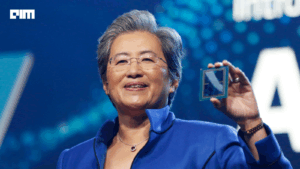Tavus has raised $40 million in Series B funding. The round was led by CRV with participation from Scale Venture Partners, Sequoia Capital, Y Combinator, HubSpot Ventures, and Flex Capital. The company plans to use the funds to expand operations and advance the development of its digital human technology.
Founded and led by CEO Hassaan Raza, Tavus is developing Personal Affective Links, or PALs. These digital agents interact with people through video, voice, and text while recognizing emotion and context.
In a LinkedIn post, Raza described PALs as “emotionally intelligent, multimodal, and capable of understanding and perceiving.” He added, “With PALs, we’re finally teaching machines to think like humans—to see, hear, respond, and look like we do.”
The agents combine rendering, speech comprehension, and contextual awareness to simulate human behavior in real-time interactions.
Foundational Models
Each PAL is powered by a set of proprietary models developed entirely in-house by Tavus’ research team.
Phoenix-4 manages visual rendering, lifelike expressions, head movements, and emotion display. The system operates at conversational latency, ensuring responses appear immediate and natural.
“Phoenix-4 allows the agents to express subtle human cues, from facial expressions to gestures, which makes interactions feel more natural,” Raza said.
Sparrow-1 handles audio comprehension, including timing, tone, and emotional context. It interprets both semantic and auditory cues to guide conversations accurately.
Raven-1 interprets broader context, including environments, gestures, facial expressions, and emotions, giving PALs the ability to perceive interactions in a human-like manner. These models are integrated with an orchestration and memory management system, that allows PALs to combine video, speech, and text while maintaining continuous interaction capabilities.
Capabilities of PALs
PALs function as digital agents with distinct personalities. Some act as virtual assistants, while others serve as conversational companions. They retain memory of prior interactions, allowing them to adjust responses and remember user preferences over time.
Users can interact with PALs via video calls, phone conversations, or text messaging. They can manage schedules, respond to emails, assist with research, and generate documents. By combining visual, auditory, and contextual understanding, PALs operate without continuous human guidance while maintaining coherent and natural interactions.
PALs can initiate interactions, follow up on tasks, and provide reminders. Their ability to perceive context and respond in real time allows them to perform complex tasks efficiently. The agents’ design supports use in professional workflows as well as personal communications.
“PALs are designed to meet people where they are,” Raza said. “They can interact over video, voice, or text, and they adjust to your behavior and preferences. This allows the technology to be integrated into daily life seamlessly.”
Deployment and Development
Tavus has released five initial PALs to demonstrate their functionality in practical settings. Each agent has a distinct personality, illustrating the system’s ability to manage interaction, recognize emotion, and perform tasks.
The research team continues to refine Phoenix-4, Sparrow-1, and Raven-1, focusing on improving rendering quality, audio comprehension, and context perception. PALs are implemented with selected clients to evaluate functionality in operational environments. Interactions are documented to monitor performance, improve responsiveness, and maintain consistent communication quality.
The Series B funding supports scaling the research team and extending PAL deployment. PALs are accessible on Tavus’ platform, allowing users and enterprise clients to engage directly. “Every interaction helps us improve the system,” Raza said. “We use these insights to ensure PALs respond accurately and consistently across different scenarios.”
Human-Like Interaction
PALs provide a new interface for interacting with digital systems. Unlike conventional assistants that rely on commands, they respond based on awareness of context. By integrating video, audio, and text inputs, PALs maintain coherent communication that resembles human conversation.
The combination of Phoenix-4, Sparrow-1, and Raven-1 allows PALs to perceive visual cues, recognize gestures and expressions, and respond appropriately. This enables them to participate in workflows and carry out tasks that involve multiple steps or require situational awareness.
Tavus logs all interactions to refine performance and maintain consistent results. PALs support operational and personal activities by managing tasks, facilitating communication, and providing a human-like interface for digital interaction.










